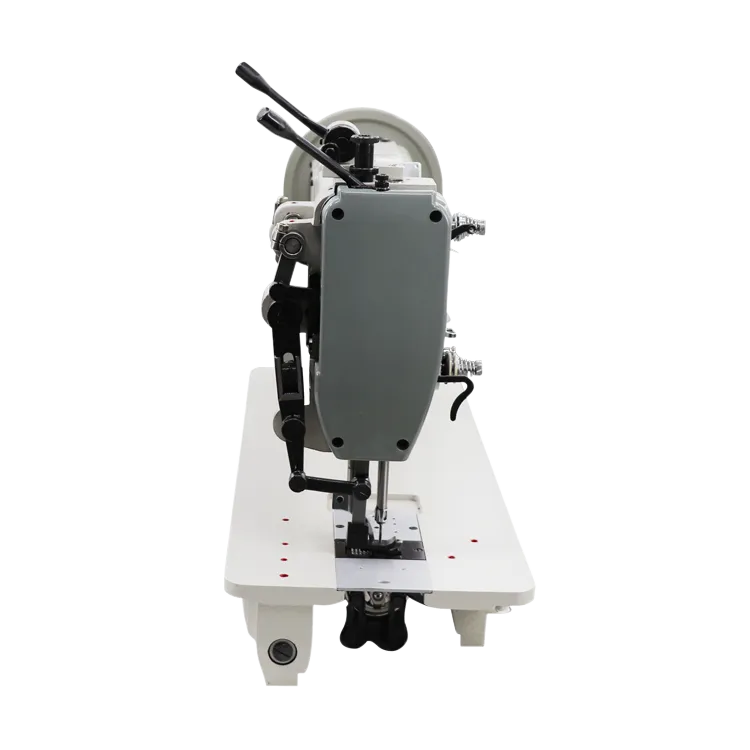Exploring the Advantages of a Walking Foot Sewing Machine for Precision and Versatility in Sewing Projects
The Evolution and Functionality of Walking Needle Sewing Machines
The walking needle sewing machine, a pivotal invention in the world of textile manufacturing, has transformed the way fabric is stitched together. This remarkable machine combines innovative technology with practicality, making it an essential tool for both commercial sewing operations and home crafting enthusiasts. Understanding its evolution, functionality, and applications provides insight into why it remains relevant in today's fast-paced world.
Historical Context
The journey of the walking needle sewing machine began in the early 20th century as the demand for more efficient sewing techniques grew in response to the booming textile industry. Before its invention, conventional sewing machines relied on fixed needles and feed mechanisms, which often resulted in uneven stitches and difficulty handling multiple layers of fabric. The introduction of the walking foot mechanism revolutionized the sewing process, allowing the needle and the fabric to move simultaneously. This not only improved the precision of stitching but also enhanced the machine’s ability to sew challenging materials, such as leather and heavy fabrics.
Mechanics of the Walking Needle
At the core of the walking needle sewing machine is its unique walking foot design. Unlike traditional machines, the walking foot consists of multiple components that work in harmony to move the fabric evenly under the needle. The walking foot pulls the fabric from the top, while the feed dogs underneath push it from below, ensuring that all layers of fabric advance together. This is particularly beneficial when sewing thick seams or multiple layers, preventing puckering and distortion.
walking needle sewing machine

Another key feature is the adjustable stitch length, which provides versatility for different sewing projects. Operators can easily modify the stitch length, allowing for intricate designs or sturdy seams as needed. Additionally, many walking needle machines come equipped with various presser feet attachments, enabling users to create decorative stitches or tackle specific tasks such as quilting or binding.
Applications
The applications of the walking needle sewing machine are vast and diverse. In the fashion industry, it is commonly used for constructing garments, as it allows for precise seams and finishes. Craftspeople appreciate its utility in creating bags, upholstery, and home decor items. Quilters especially favor walking needle machines for their ability to handle layered fabrics without compromising accuracy.
Moreover, the walking needle sewing machine is not limited to the textile industry. Its robust design and high performance have made it an invaluable tool in industries such as automotive and upholstery, where strong, durable seams are crucial. Even in the world of cosplay and costume design, enthusiasts utilize these machines to bring complex designs to life with exceptional detail.
Conclusion
The walking needle sewing machine exemplifies the blend of engineering and artistry in the world of sewing. Its innovative features have addressed the shortcomings of earlier sewing technologies, offering users increased control and accuracy. As it continues to evolve with advancements in technology, the walking needle sewing machine will undoubtedly remain a beloved tool for many, bridging the gap between traditional craftsmanship and modern efficiency. Whether you are a professional tailor or a hobbyist, investing in a walking needle machine can enhance your sewing projects and unlock new creative possibilities.
-
Leather Sewing Machine: The Industrial Standard for Tough MaterialsNewsJul.18,2025
-
Sail Making Machine: Heavy-Duty Stitching for Industrial and Marine NeedsNewsJul.18,2025
-
Sling Sewing Machine: The Backbone of Heavy-Duty FabricationNewsJul.18,2025
-
Leather Sewing Machine: Precision for Heavy-Duty StitchingNewsJul.18,2025
-
Big Bag Sewing Machine: Powering the Future of Bulk PackagingNewsJul.18,2025
-
FIBC Sewing Machine: Essential Equipment for Bulk Bag ProductionNewsJul.18,2025
-
Heavy Duty Leather Sewing Machine: A Must-Have for Professional LeatherworkNewsMay.28,2025





























